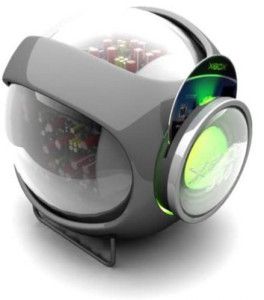From our front-page news:
Throughout the history of video gaming, we've always been able to expect a new console "in a few years", and that rule of thumb has kept rather consistent. Since the turn of the century though, things have changed dramatically in the game console landscape, some for better, some for worse. Consoles are becoming more like computers with each new release, not to mention much, much more advanced.
Microsoft released their Xbox 360 in November of 2005, close to four years ago, and Sony and Nintendo followed-up with their current-gen consoles the following year, the PlayStation 3 and Wii, respectively. So the question must be begged, when will be seeing the next-gen consoles? If Yves Guillemot, CEO of Ubisoft's claim has merit, then we may very-well be seeing them earlier than originally expected.
The reason? Services like OnLive, which aim to deliver high-quality gaming to consumers through their network connection. This method completely removes any limitations that a home console would have, as the servers for the service would be able to keep current with updated hardware if desired. What that means is that the big three may end up releasing their consoles earlier than they would have liked, and something in me tells me that's going to be a bad thing. I don't think I need to explain why.
Beyond a potential early release, Guillemot also spoke about the potential development costs for the upcoming consoles. Whereas it costs between $20 - $30 million today to create a top-tier game, the next-generation of consoles could skyrocket that figure up to $60 million. The game companies will have two options there. Raise the prices of retail games (which isn't going to help piracy any, or make certain that the games they release are epic, so they'll sell far more in volume. It's actually kind of scary to picture what the console landscape is going to be like in the next-gen... hopefully all the changes will be good ones.

Next generation, estimates Guillemot, top tier games will likely average $60 million to make. The ramifications for that are unknown. It could mean higher retail prices or lower return on investment. Ubisoft hopes to supplement the cost by reusing assets in the film community (as it is currently doing with its game adaptation of James Cameron's "Avatar".)
Source: CNBC
Microsoft released their Xbox 360 in November of 2005, close to four years ago, and Sony and Nintendo followed-up with their current-gen consoles the following year, the PlayStation 3 and Wii, respectively. So the question must be begged, when will be seeing the next-gen consoles? If Yves Guillemot, CEO of Ubisoft's claim has merit, then we may very-well be seeing them earlier than originally expected.
The reason? Services like OnLive, which aim to deliver high-quality gaming to consumers through their network connection. This method completely removes any limitations that a home console would have, as the servers for the service would be able to keep current with updated hardware if desired. What that means is that the big three may end up releasing their consoles earlier than they would have liked, and something in me tells me that's going to be a bad thing. I don't think I need to explain why.
Beyond a potential early release, Guillemot also spoke about the potential development costs for the upcoming consoles. Whereas it costs between $20 - $30 million today to create a top-tier game, the next-generation of consoles could skyrocket that figure up to $60 million. The game companies will have two options there. Raise the prices of retail games (which isn't going to help piracy any, or make certain that the games they release are epic, so they'll sell far more in volume. It's actually kind of scary to picture what the console landscape is going to be like in the next-gen... hopefully all the changes will be good ones.

Next generation, estimates Guillemot, top tier games will likely average $60 million to make. The ramifications for that are unknown. It could mean higher retail prices or lower return on investment. Ubisoft hopes to supplement the cost by reusing assets in the film community (as it is currently doing with its game adaptation of James Cameron's "Avatar".)
Source: CNBC
